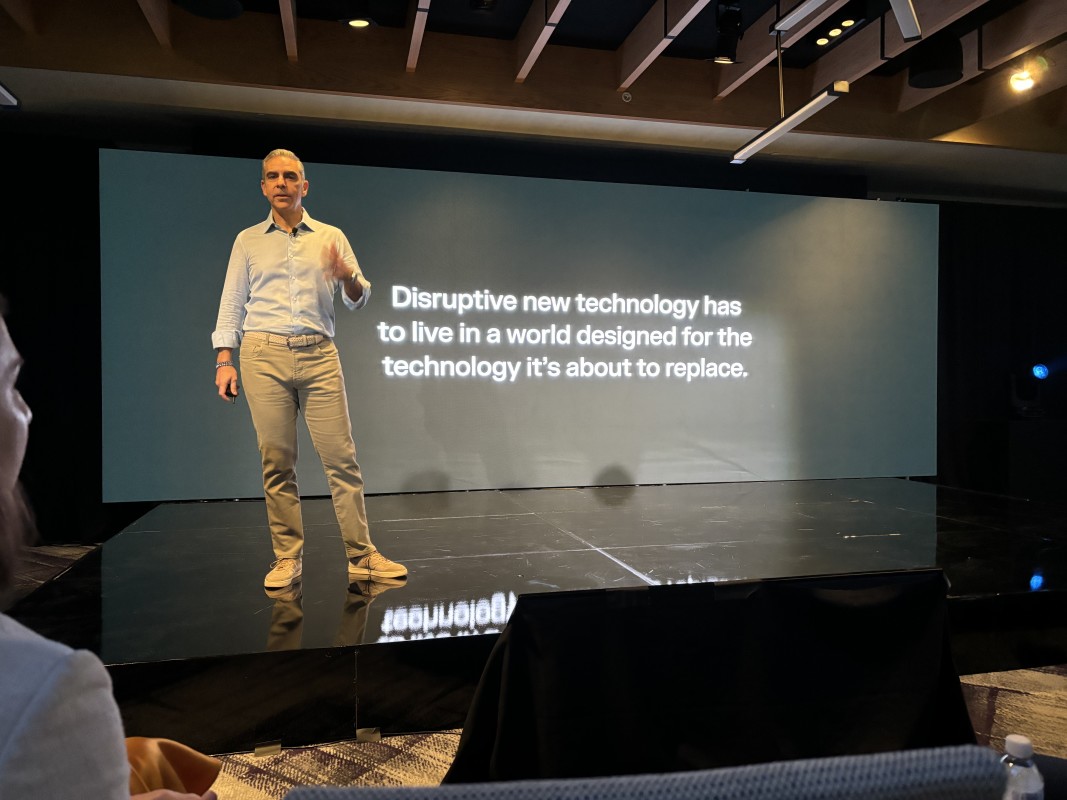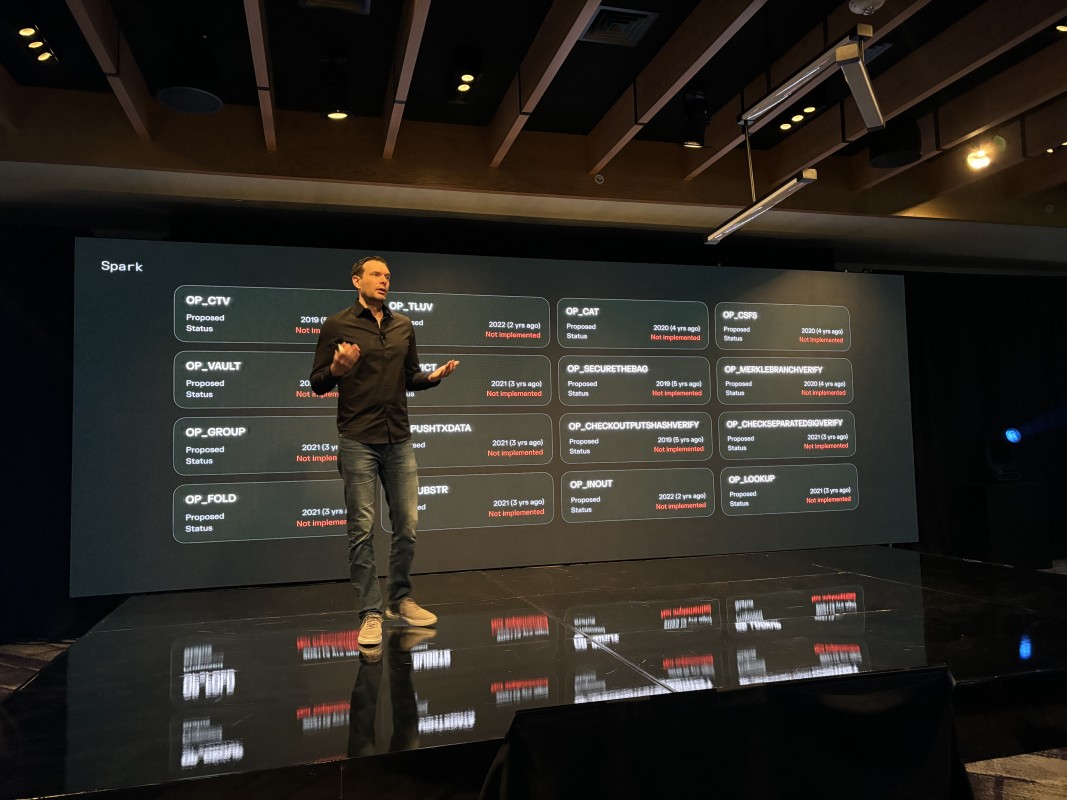lightning
SHINOBI: OFF-CHAIN PROTOCOLS WILL ALWAYS BE A BALANCING ACT
Published
2 months agoon
By
admin


Rene Pickhardt recently kicked off a thread discussing the differences between two party and multiparty (more than two participants) payment channels as it relates to his research work around payment reliability on the Lightning Network. He voices a growing skepticism of the viability of that direction for development.
The high level idea of why channel factories improve the reliability of payments comes down to liquidity allocation. In a network of only two party channels, users have to make zero sum choices on where to allocate their liquidity. This has a systemic effect on the overall success rate of payments across the network, if people put their liquidity somewhere it isn’t needed to process payments instead of where it is, payments will fail as the liquidity in places people need is used up (until it is rebalanced). This dynamic is simply one of the design constraints of the Lightning Network known from the very beginning, and why research like Rene’s is incredibly important for making the protocol/network work in the long run.
In a model of multiparty channels, users can allocate liquidity into large groups and simply “sub-allocate” it off-chain wherever it makes sense to in the moment. This means that even if a node operator has made a poor decision in which person to allocate liquidity to, as long as that person is in the same multiparty channel with people that would be a good peer, they can reallocate that poorly placed liquidity from one to the other off-chain without incurring on-chain costs.
This works because the concept of a multiparty channel is essentially just everyone in the group stacking conventional two party channels on top of the multiparty one. By updating the multiparty channel at the root, the two party channels on top can be modified, opened, closed, etc. while staying off-chain. The problem Rene is raising is the cost of going on-chain when people don’t cooperate.
The entire logic of Lightning is based around the idea that if your single channel counterparty stops cooperating or responding, you can simply submit transactions on chain to enforce control over your funds. When you have a multiparty channel, each “level” in the stack of channels adds more transactions that need to be submitted to the blockchain in order to enforce the current state, meaning that in a high fee environment multiparty channels will be more expensive than two party channels to enforce on-chain.
These are core trade-offs to consider when looking at these systems compared to each other, but I think focusing exclusively on the on-chain footprint ignores the more important point regarding off-chain systems: they are all about incentivizing participants to not go on-chain.
Properly structuring a multiparty channel, i.e. how you organize the channels stacked on top, can allow you to pack groups of people into subsections that have a reputation for high reliability, or who trust each other. This would allow people in these subgroups to still reorganize liquidity within that subgroup even if people outside of it are not responsive temporarily, or go offline due to technical issues. The on-chain cost of enforcing things, while important, is kind of tangential to the core design goal of an off-chain system: giving people a reason to stay off-chain and cooperate, and removing reasons for people to not cooperate and force things onc-chain.
It’s important to not lose sight of that core design aspect of these systems when considering what their future will look like.
Source link
You may like


Microsoft Should Buy $78 Billion Worth of Bitcoin


Ethereum Believers May Be Staring Down Opportunity As ETH Reaches Another Low Against Bitcoin: CryptoQuant CEO


UK government is ready for crypto regulations next year


“Crypto Dad” Chris Giancarlo Emerges Top For White House Crypto Czar Role


Bitcoin Nears $100,000 As Trump Council Expected To Implement BTC Reserve


Know Your Missiles: Russia’s Experimental Hypersonic Missile Is A New Kind of Killing Machine
Breez
More Nodeless Non-custodial Bitcoin Lightning Wallets, Por Favor
Published
1 week agoon
November 14, 2024By
admin


On Tuesday, Breez announced its latest partner, Yopaki, a Mexican neobank. Yopaki has integrated with Breez’s free and open-source SDK, which enables its users to have a non-custodial Lightning wallet without having to run their own Lightning node. (More on how this works here.)
Before continuing, I have to say that I get a little bit jealous whenever Breez makes such announcements, because they make me wish that Breez could partner with neobanks or Bitcoin apps accessible to residents in New York State, like myself.
The thing is though, we can’t have nice Lightning things here in the Empire State because regulation in New York — a state that seems to almost pride itself on its soul-crushing levels of red tape and bureaucracy — prohibits companies from offering Lightning services.
But anyway, where was I?
⚡️Welcoming Yopaki to (Nodeless) Lightning ⚡️
We're thrilled to announce @yopaki_ as our latest SDK partner. The bitcoin neobank is reimagining banking while sharing 🇲🇽 culture with the world.
Powered by Breez SDK – Nodeless (@Liquid_BTC) 🚀
— Breez ⚡ (@Breez_Tech) November 12, 2024
In the Bitcoin space, we frequently hear about the challenges Bitcoin faces in scaling and how Lightning isn’t a sufficient solution. Oddly enough, though, we never hear this complaint from Roy Sheinfeld, co-founder and CEO of Breez, because he’s too busy building things that prove the Lightning naysayers wrong.
Sheinfeld and the team at Breez, who are on a mission to bring Lightning to every app, have been on a hot streak when it comes to helping Lightning users around the world gain access to non-custodial Lightning services. Earlier this year, they announced partnerships with Volt in Nigeria and Diamond Hands in Japan.
We're excited to announce the beta release of Diamond Wallet, a self-custodial Lightning wallet that enables users to earn sats by viewing ads.
It's also the first self-custodial wallet from Japan, built using the Breez SDK and its Greenlight implementation.
Demo video↓ pic.twitter.com/kpsgfh3RGZ
— Diamond Hands💎🙌 (@DiamondHandsLN) October 1, 2024
Sometimes, when I’m alone, I look up at the sky and say to myself, “Why, God, why do Nigerians, the Japanese and Mexicans get access to such sweet monetary tech while my once great state — home to a city that refers to itself as the ‘financial capital of the world,’ but ironically doesn’t allow its residents to use cutting edge Lightning services — fades into obscurity?”
While I never get an answer, I do take comfort in the fact that the likes of Sheinfeld and the team at Breez are out there ensuring that nodeless non-custodial Lightning wallets are proliferating, enabling people to more easily use bitcoin as it was intended to be used — peer-to-peer.
I look forward to seeing Breez partner with even more apps and neobanks in 2025.
This article is a Take. Opinions expressed are entirely the author’s and do not necessarily reflect those of BTC Inc or Bitcoin Magazine.
Source link
business
David Marcus: From PayPal President To Bitcoin Believer
Published
3 weeks agoon
October 30, 2024By
admin
David Marcus is taking his experience as the former head of PayPal and Meta Messenger and applying it to building on Bitcoin’s Lightning Network.
At Lightspark’s first partner summit, Lightspark Sync, he and his team rolled out new capabilities for the Universal Money Address (UMA) standard it launched one year ago. These new features will make it easier to tip, pay for subscriptions and invoice over Lightning (and in conjunction with banks in some cases).
At the summit, Lightspark also unveiled a new Bitcoin L2 it has built — Spark — which is interoperable with Lightning and which enables users to use bitcoin (and stablecoins) non-custodially.
I sat down with Marcus the day before Lightspark Sync to learn more about what drives him. We also discussed his strategy in harnessing the power of Bitcoin as a neutral global settlement layer, while still meeting everyday users where they’re at regarding what type of money they like to use.
A transcript of our conversation, edited for length and clarity, follows below.
Frank Corva: I recently saw you post on Twitter that you were happy to be sick on a weekend versus on a weekday because you’re so excited about what you’re working on here at Lightspark. What about this work makes you so excited?
David Marcus: Well, the general idea of changing the way money moves around the world is something that I’ve been obsessed with for a very long time. The fact that we can really change this for potentially billions of people in a profound way is a once in a generation opportunity that I get to actually work on with an amazing team. It’s exciting when you start making progress and when you start to see product market fit.
Corva: Some members of the Lightspark team just showed me the new capabilities of the Universal Money Addresses (UMA) as well as Lightspark’s new Bitcoin L2, Spark. You’re catering to both everyday people who want to move money globally and Bitcoin enthusiasts who care about self-custody. Is the strategy to just get as many people using your products as possible?
Marcus: Just to backtrack a little bit — I don’t need to convince you, but once you get the conviction that Bitcoin is the only thing that can actually be the internet of money because it’s the only asset and network that’s neutral enough to be that, then you have to wonder: Why hasn’t it already won?
If you go back and peel the onion, you start to see, first of all, bitcoin wasn’t moving all that quickly or cheaply. That’s where the Lightning Network came in. The problem with the Lightning Network, while it’s been around for a while, was that it was really hard to implement, really hard to operate and really hard to maintain. And it wasn’t super reliable for transactions.
So, we invested a good chunk of the two plus years of our existence into really making an enterprise grade entry point into Lightning for institutional players, banks and exchanges. That really changed the game, because a lot of them were looking at the lack of activity on the Lightning Network and at the complexity of getting on the Lightning Network and then it became a self-fulfilling prophecy: there’s no activity, it’s too hard, I’m not going to do it
Corva: I’ve heard those complaints before.
Marcus: We broke that cycle by launching Lightspark Connect. That was the foundation, because if you can’t make what I call TCP/IP packets for money — fragments of bitcoin on Lightning — work really well, then you can’t do anything. That was priority number one.
Then we realized we need to enable people to move the currencies they use for their everyday goods and services on the network. That’s when we launched UMA, which is this Universal Money Address standard built on top of LNURL, and extended it so that regulated entities can not only be compliant but can also change in and out of bitcoin and get a quote from the counterparty they’re sending to for the desired currency of the recipient.
That was starting to really work, but then we realized, “Okay, we need to reach [people on] the network that are going to implement UMA natively across the world, but network effects are going to take forever.” That’s where Extend comes in. It makes Bitcoin, Lightning, and UMA compatible with the legacy payment and banking rails, which is really critical.
That’s now launching, and we’re seeing really promising traction with making the entire banking sector basically compatible with Lightning. People have the ability to send and receive money in real time 24/7, no bank holidays, no weekends, nothing.
Then we realized that institutions are building on top of UMA and are offering the ability for their customers — whether they’re consumers or businesses — to claim an UMA address, which is good for peer-to-peer payments, but there’s so much more that we can do. That’s where UMA Request and UMA Auth come in.
Corva: From what I’ve learned thus far, these seem like they will be quite important for merchants.
Marcus: With UMA Request, whether you’re a business or an e-commerce site, you can request money from a wallet [that holds] another currency, and have the transaction settled on Lightning. Then there’s UMA Auth, which is OAuth for money. It’s basically the ability for wallet holders or account holders that are UMA-enabled to delegate push and pull of funds with user set limits. If you make the credit card comparison, you can give your credit card for a subscription, but you don’t set the limit.
So now, if you look at where we are: We basically made Lightning the thing that moves bitcoin fast and cheap — really easy to integrate, maintain, and operate. We figured out a way to move fiat currencies on top of the network in a seamless way. We extended the network to make it compatible with the old banking rails. But what’s missing for Bitcoin now to win fully and entirely and become the true open standard for moving money on the internet? I think there are two things that are holding it back.
One is self custody wallet support. If the network is a closed network and only works between custodial entities, we don’t want that. We want this thing to be as open as possible. Also, for developers, if you need to ask someone for permission to develop something, to test something, to build something, then it’s not like the internet — it’s like CompuServe or AOL.
Support for fast and cheap self-custody wallets on Bitcoin is something that we tried to figure out with Lightning, and it’s basically impossible. I mean, it’s possible but economically non-viable to park that amount of liquidity in front of every self-custody wallet for an eventual future transaction. Then, there are a bunch of different things that we explored with LSPs. They are either non-compliant or have a lot of other issues around how they move money.
The second thing was stablecoins, which are basically a version of a US-dollar denominated bank account for people who can’t have the real thing. As they grow in popularity and usage, if we can’t make them travel natively on Bitcoin, then we’re at a disadvantage. And so that’s why we built Spark, which is what we see as a totally non-linear jump forward for Bitcoin that will enable self-custody wallets to interoperate fully with Lightning.
It really extends the reach of self-custody to Lightning. It makes stablecoins a reality on Bitcoin, which they couldn’t be as well on Lightning, because, if you look at Taproot Assets and [other protocols like it], they’re pretty good on top of Lightning, but then you go back to the problem of pairwise channels for each of those stablecoins. In a world where you’re going to have thousands of stablecoins, it’s just not going to work.
We believe Spark solves the last two problems standing in a way of Bitcoin becoming the internet of money.
Corva: UMA Auth enables people to make payments within other apps. Was it challenging to build something that accomplishes this, something that makes payments and tipping not only possible but easy?
Marcus: There are several things here to unpack. First of all, making Lightning work really well for regulated entities was really hard. Once you’ve done that, you need to build something that enables them to move the money that people want to use and do it in a way in which regulated entities can meet their compliance requirements. That’s something that’s non-trivial.
Then, the Extend piece is actually understanding how payment systems work and really doing the work — which is a lot of work — to make the network compatible with existing payment rails.
So, A, it’s a lot of work. B, it’s a lot of understanding of not just how Bitcoin and Lightning work, but also how traditional payments globally work, what the regulatory landscape looks like, and what people, what companies and regulated institutions actually need to trust the network that they’re going to connect to and offer to their customers.
Corva: Do banks see the benefits in using Lightning as a settlement layer? In some ways, it seems like with what you’ve built, there would be no need for CBDCs, which would help keep smaller banks in business, because it isn’t a given that CBDCs will be able to be used for international remittances.
Marcus: Some banks do, and some others will eventually, but they’ll take a little more time.
At the end of the day, if you build a more efficient network that enables global money movement faster, cheaper, in real time 24/7 and with no blackout dates, then that’s where money is going to flow and the financial system and the ecosystem players are just going to need to adapt to that.
If you’re a bank you’re going to be able to offer global payments to your clients at a cheaper rate and have a margin on top of that, which you know is going to be very comfortable if you’re competing with the current alternatives — international wire transfers are still forty five to fifty dollars.
Corva: You’re working with Nostr Wallet Connect (NWC) and the team from Alby. It seems like you really have your ear to the ground regarding new technologies coming to market in the Bitcoin, Lightning and Nostr spaces.
Marcus: Absolutely. With Nostr Wallet Connect, there’s actually a really good solution to the problem of delegating Auth, or delegating the ability to push and pull from a wallet with a protocol, that is starting to have nascent network effects in the Bitcoin and Nostr communities.
It’s really good work, and so why not extend it and enable more things to happen with Nostr Wallet Connect for mainstream use cases? That’s the way we look at things. We look at what the entire community is building, we contribute to those efforts, and then we try to extend it to bring it to mainstream consumers so they can use it in a way that is going to be familiar and not foreign to them.
Corva: Do you have any final thoughts you’d like to share?
Marcus: We’re really excited. We feel like all of these capabilities that we’ve been hard at work on in are almost two and a half years of existence are reaching a tipping point right now where basically there are all of the capabilities that are required for Bitcoin to decisively win at becoming the open internet for money, and now it’s just a matter of executing, of finding all of the entities that are going to not only share that vision but execute it with us.
That’s why — to your point about me not wanting to be sick on a work day — I feel like this is just too exciting to not work on every day.
Source link
business
Lightspark Announces New Bitcoin L2 and Upgraded UMA Capabilities
Published
4 weeks agoon
October 25, 2024By
admin
At Lightspark Sync, Lightspark’s first partner summit on Thursday, the company announced new products and features that will allow users to make global payments with both bitcoin and fiat.
The company announced that it has launched an alpha version of Spark, a Bitcoin Layer 2 that’s interoperable with Lightning and that makes it cheaper to onboard users to a non-custodial Bitcoin layer.
The company also announced new capabilities for UMA, the company’s open-source and regulatory compliant payment solution that makes sending money as simple as sending an email.
With UMA Extend, the Lightning Network can serve as a bridge between traditional banks globally, while with UMA Auth and UMA Request, UMA users can tip, pay subscription fees and make payments to merchants within apps.

Spark — Lightspark’s Bitcoin Layer 2
Spark is a Layer 2 protocol for Bitcoin that leverages statechain technology. In short, users can hold fractions of bitcoin off-chain, and transfer these by sending private keys to other users (rather than signing transactions with the keys).
Lightspark created Spark to better support the onboarding of users to the Lightning Network, which normally requires an on-chain transaction for each payment channel as well as the locking up of some amount of bitcoin in these channels so users can send and receive transactions.
The layer 2 was primarily borne from the frustration that the Lightspark team encountered in trying to create a non-custodial Lightning wallet for users.
“Self-custodial Lightning wallets, especially at scale, just aren’t viable,” Lightspark CTO Kevin Hurley told Bitcoin Magazine.
“If you are opening channels for billions of users, fees are going to go through the roof, and you’re going to fill up block space. It’s just something that’s not going to be reasonable and you lock up liquidity for every single user,” he added.
Hurley also shared that Lightspark didn’t want to wait for the enabling of Bitcoin opcodes (like CheckTemplateVerify or TapleafUpdateVerify) that would make it cheaper to open new Lightning channels. Lightspark wanted to offer users a non-custodial option immediately.
So, they built Spark, a Bitcoin Layer 2 that offers users cheap, instant payments as well as a permissionless, unilateral exit to the Bitcoin base layer. It also enables offline receive, or the ability to receive bitcoin even when your device isn’t connected to the internet.
Besides statechains, Spark also utilizes atomic swap technology. Its design is similar to that of Mercury Layer in that it enables the off-chain transfer of ownership of Bitcoin UTXOs while benefiting from near instant and fee-free transactions, according to Hurley.
“Mercury has a lot of core limitations that we go beyond,” explained Hurley.
“In Mercury, for example, you can transfer whole UTXOs only. You have absolute time bombs where you have to go back on chain at some absolute time. So, you can only do so many transactions. Also, we pull in different pieces like connector transactions from Ark, for example, but, other than that, we’re not similar to Ark at all,” he explained.
“I think it’s hard to compare it to something, because it pulls in a lot of different components, and I think the trade-offs that we chose to make are different than many others probably chose to make.”
Besides bitcoin, it’s also possible to issue and use stablecoins on Spark. Or you can issue stablecoins via Taproot assets, LRC-20 or RGB on the base layer and transfer them to Spark.
A unique dimension of Spark, though, is that the assets on the layer 2 are all UMA enabled.
“You can now have non-custodial users sending directly to the bank accounts of UMA Extend users,” said Hurley, mentioning one of the new functionalities of UMA addresses.

UMA Extend
UMA Extend integrates the Lightning Network with traditional banking systems, allowing users to make international bank transfers in seconds. With this new technology, UMA Extend users can send any other UMA Extend user a near instant cross-border payment from one bank to another over Lightning as easily as sending an email.
“It’s designed to facilitate money movement across any currency,” Nicolas Cabrera, VP of Product at Lightspark, told Bitcoin Magazine. “I can be in Brazil sending my local currency, the Brazilian real, to a user based in Europe that wants to receive euros or someone in the US who wants to receive USD.”
The Brazilian reals leave the sender’s bank account, are converted into sats by the bank (or an entity like Zero Hash, if the banks can’t touch crypto), which are then received by the recipient’s bank, which converts it back into euros, USD of whatever currency the recipient holds in their bank account. All of this occurs within 30 seconds or so, a radical shift compared to the two to three days it often takes for international money transfers to settle.
“This is the first time connecting the Lightning Network to traditional banking routes and bank systems,” Cabrera added.
UMA Extend utilizes Real-Time Payments (RTP), which enables real-time payments for federally insured depository institutions in the United States, and comparable services in the other countries in which UMA Extend is available. All banks in the US who use RTP support Extend. Currently, Lightspark’s partners support on- and off-ramps for 44 fiat currencies in over 100 countries.
The traditional financial institutions involved with these transactions will set the fees for the transactions, which tend to range between 0.25% and 0.5% — significantly cheaper than the 6.35% customers often pay to make international remittance payments via traditional financial rails.
Those interested in using UMA Extend can do so via this link.
UMA Auth
At the event, Lightspark also introduced UMA Auth. The technology leverages OAuth (Open Authentication) technology (the backend tech for when a website gives you the option to sign into a third-party app or website with Google or Facebook), an open-standard authorization protocol that provides users with secure access to a website or application.
UMA Auth was built using Nostr Wallet Connect (NWC), a protocol developed by the team at Alby. NWC now supports UMA features like cross-currency transactions and client app registration.
“We wanted to expand the coverage of UMA beyond wallets to applications,” Shreya Vissamsetti, a member of the Lightspark engineering team that works on UMA, told Bitcoin Magazine.
“UMA Auth is a new extension on top of UMA that allows you to integrate payments directly into an application. The idea is that it’s a lot like OAuth, but for money,” she added.
“All you have to do is input your UMA address and then we form a connection to your Lightspark wallet straight from the application. That gives the app access to communicate with your wallet and push money in right from the application.”
UMA Auth enables users to do everything from tipping their favorite artists to paying a subscription fee to paying a friend through their preferred messaging app.
“Say I’m listening to Taylor Swift,” began Vissamsetti.
“I can link my UMA account, and if my favorite song is playing, I can just tap a button and send her a super small tip,” she explained.
“Tipping is one of the main uses we’re going after with this product,” said Cabrera. “Lightning is again a good foundation layer for us because it allows for sending small amounts.”
UMA Request
UMA Request is another new dimension of UMA, one that allows any UMA user to request a payment from another UMA user.
Merchants can use UMA Request to request payments via an invoice, which comes in the form of a QR code, for the product sold or service rendered. UMA Request also supports zero-sum invoices, through which invoice recipients can pay whatever amount they’d like.
“Previously with UMA, the sender initiated the payment, but we’ve flipped it around,” said Vissamsetti.
Another standout feature of UMA Request is that it ensures both parties involved in the transaction receive a record of the transaction.
UMA Request makes purchasing items online — especially across borders — easier and cheaper than using credit cards.
Moving Forward
Lightspark’s CEO David Marcus, the former president of PayPal, believes that it’s only a matter of time until more banks and platforms come to adapt new technologies like UMA Extend, UMA Auth and UMA Request.
“At the end of the day, if you build a more efficient network that enables global money movements to move faster, cheaper, in real time 24/7 with no blackout dates, then that’s where money is going to flow and the financial system and the ecosystem players are just going to need to adapt to that,” Marcus told Bitcoin Magazine.
Regarding Spark, the Lightspark team is looking for feedback from users on how to improve the product.
“We are going to fully engage with the community,” said Hurley.
“We want to make this completely out in the open, completely open-source. Anyone can audit it, spin up their own versions if they want to,” he added.
“We want this to be a collaborative thing where the community joins in, where they hopefully submit pull requests and help find things that they want to improve.”
Christina Smedley, co-founder and Chief Marketing and Comms Officer at Lightspark, echoed Hurley’s sentiment as she discussed both Spark and UMA’s new functionalities.
“We’re trying to [onboard] the next billion or couple of billion,” Smedley told Bitcoin Magazine, “so it’s really important that what we do is open-source and community-led.”
Source link

Microsoft Should Buy $78 Billion Worth of Bitcoin

Ethereum Believers May Be Staring Down Opportunity As ETH Reaches Another Low Against Bitcoin: CryptoQuant CEO

UK government is ready for crypto regulations next year

“Crypto Dad” Chris Giancarlo Emerges Top For White House Crypto Czar Role

Bitcoin Nears $100,000 As Trump Council Expected To Implement BTC Reserve

Know Your Missiles: Russia’s Experimental Hypersonic Missile Is A New Kind of Killing Machine

Polkadot investor predicts a 30,000% rally for this $0.04 token by 2025

Donald Trump Proposed Crypto Advisory Council To Set Up Strategic Bitcoin Reserve

Want Greater Bitcoin Adoption? Engage With Your Government.

Why the Media Loves the Worst of Crypto

HashCats prepares for Token Generation Event after completing mining season

Gary Gensler To Step Down As US SEC Chair In January

The Chart That Shows Bitcoin’s Bull Run Won’t Stop at $100,000

$2 Million PEPE Purchase Sees 105 Billion Tokens Snapped Up

XRP price expected to reach $7, Dogecoin $3, and PCHAIN $1 from $0.004
182267361726451435

Top Crypto News Headlines of The Week

Why Did Trump Change His Mind on Bitcoin?

New U.S. president must bring clarity to crypto regulation, analyst says

Ethereum, Solana touch key levels as Bitcoin spikes

Bitcoin Open-Source Development Takes The Stage In Nashville

Will XRP Price Defend $0.5 Support If SEC Decides to Appeal?

Bitcoin 20% Surge In 3 Weeks Teases Record-Breaking Potential

Ethereum Crash A Buying Opportunity? This Whale Thinks So

Shiba Inu Price Slips 4% as 3500% Burn Rate Surge Fails to Halt Correction

‘Hamster Kombat’ Airdrop Delayed as Pre-Market Trading for Telegram Game Expands

Washington financial watchdog warns of scam involving fake crypto ‘professors’

Citigroup Executive Steps Down To Explore Crypto
Mostbet Güvenilir Mi – Casino Bonus 2024

Bitcoin flashes indicator that often precedes higher prices: CryptoQuant
Trending

 2 months ago
2 months ago182267361726451435

 24/7 Cryptocurrency News3 months ago
24/7 Cryptocurrency News3 months agoTop Crypto News Headlines of The Week

 Donald Trump4 months ago
Donald Trump4 months agoWhy Did Trump Change His Mind on Bitcoin?

 News3 months ago
News3 months agoNew U.S. president must bring clarity to crypto regulation, analyst says

 Bitcoin4 months ago
Bitcoin4 months agoEthereum, Solana touch key levels as Bitcoin spikes

 Opinion4 months ago
Opinion4 months agoBitcoin Open-Source Development Takes The Stage In Nashville

 Price analysis3 months ago
Price analysis3 months agoWill XRP Price Defend $0.5 Support If SEC Decides to Appeal?

 Bitcoin4 months ago
Bitcoin4 months agoBitcoin 20% Surge In 3 Weeks Teases Record-Breaking Potential



